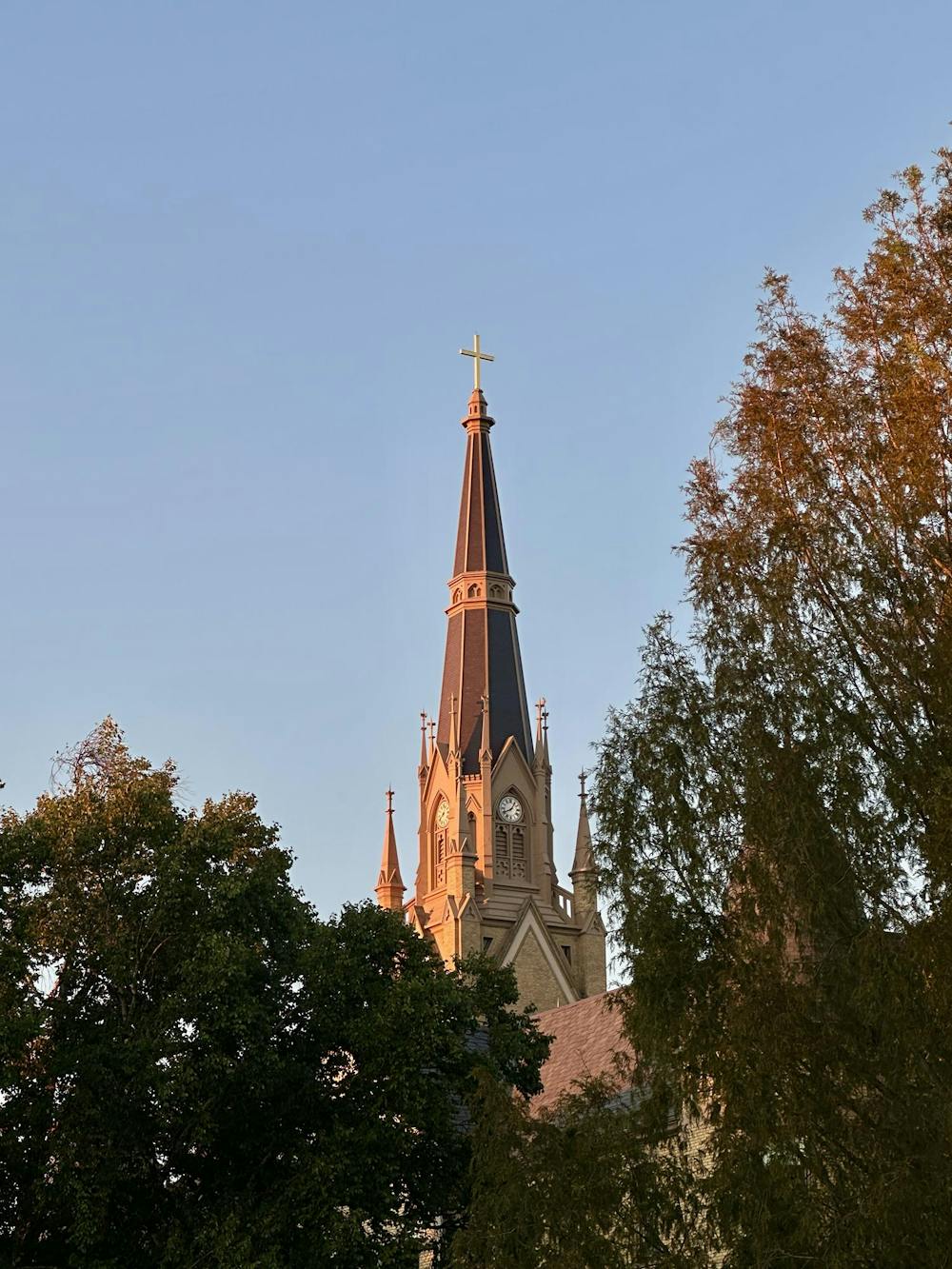We’re at the inception of a historic moment: new construction at the rubbled 1950s-era Pangborn and Fisher Halls. A new transfer quarterback strengthens faith in a relentless football tradition. A new first-year cohort is the most selective to date. A new dorm adorns East Quad. And there’s a new University president.
For the past 72 years, Notre Dame has had only four presidents assume office. Sept. 13 will host the third presidential inauguration of its kind, when Fr. Robert Dowd will publicly undertake the legacy of three monumental leaders who sustained and matured the University’s intimate community, first-string academics and Catholic pulse.
But each presidents’ legacy and inaugurations were distinct.
Fr. John Jenkins shared tales of his undergraduate experiences, referenced Main Building’s 1879 fire and enunciated Notre Dame’s challenge to preserve its Catholic identity while expanding research.
Fr. Edward “Monk” Malloy stressed academics over athletics, emphasized professor’s dedication to teaching and articulated Notre Dame’s primary asset being its “distinctiveness as a religious institution.”
Hesburgh’s trailblazing
Fr. Hesburgh didn’t have an inauguration.
He was handed a single-sex campus that mustered a $9 million endowment, strong athletic program and lax academics. On the cramped, antiquated campus, he envisioned — and executed — change.
One of the most significant changes was the introduction of coeducation. When women officially enrolled in 1972, The Observer ran an eight page feature, including an interview with then assistant to the provost Sue Roberts.
“The University is growing with the times and speaking to a demand and a need that's been voiced by its students and brought by its administration,” Roberts said in the feature. “And it just isn't the women who are pioneers, we're all pioneers.”
Roberts, an optimistic driving force behind coeducation, was right.
Hesburgh was an unconventional university president. Under his progressive plan, administrators became pioneers. Because of them, Notre Dame became.
Supportive, accomplished leaders
When Hesburgh ended his 35-year term on July 1, 1987, Malloy assumed his role. During his 18-year term, Malloy continued Hesburgh’s developments while helping to create the South Bend Center for the Homeless, increasing research funding fivefold and growing the endowment to over $3 billion.
Jenkins’s assumption was supported by his predecessors. His term carried their legacies: he created Notre Dame International, guided a $300 million development in South Bend and grew the endowment to nearly $20 billion.
“Personally, Fr. Hesburgh and Fr. Malloy were very supportive of me and gave me great advice. I'm deeply indebted to both of them,” Jenkins said in an interview with The Observer in May. “And that doesn't always happen in institutions where the new guy comes in and the old guy is shoved aside, and I hope I will be the same sort of help to my successor, Fr. [Robert] Dowd.”
Each president has sculpted the university into something greater, expanding on the undertakings of his predecessors. In the same light, faith is the dynamic force that institutes change and distinguishes Notre Dame.
Dowd’s beginning
In an exclusive interview with The Observer shortly after his appointment, Dowd emphasized his yearning to be an approachable, accessible president who diversifies the student body.
In executing these plans, Dowd will likely take after past leaders by furthering Notre Dame’s commitment to service, academics and faith through various projects. However, as Roberts said during coeducation’s implementation, the University is growing with the times and should meet the demands of students.
Students remain concerned about Notre Dame’s environmental footprint, investments and involvement in international incidents. Dowd, at a time where dividing opinions conflict on how a Catholic university should act, will have to decide what is Notre Dame's future.
So will he trailblaze an unknown? Drastically alter student life? Interject in national and international affairs?
“He [Dowd] will lead the University to being even more powerfully a force for good in the world,” Jenkins said in a statement.
"Informed by our Catholic mission, we [Dowd and Jenkins] will work together so that Notre Dame is an ever-greater engine of insight, innovation and impact, addressing society’s greatest challenges and helping young people to realize their potential for good," Dowd said in the same statement.
Dowd has already overseen numerous campus institutes, broadened internationalization and founded the Ford Program in human development studies and solidarity.
Dowd, along with university executives and administrators, can bolster future projects, plans and policies to materialize nearly any Notre Dame. But for any monumental change to precipitate from Dowd's presidency — and to hold the attention of students, alumni and the world — the Notre Dame family must bestow faith.
Redmond (Reddy) Bernhold is a junior studying biochemistry and journalism. He originally hails from Minster, Ohio but calls Siegfried Hall his home on campus. When not writing, he explores South Bend coffee shops and thrift stores. You can contact Reddy at rbernho2@nd.edu.










